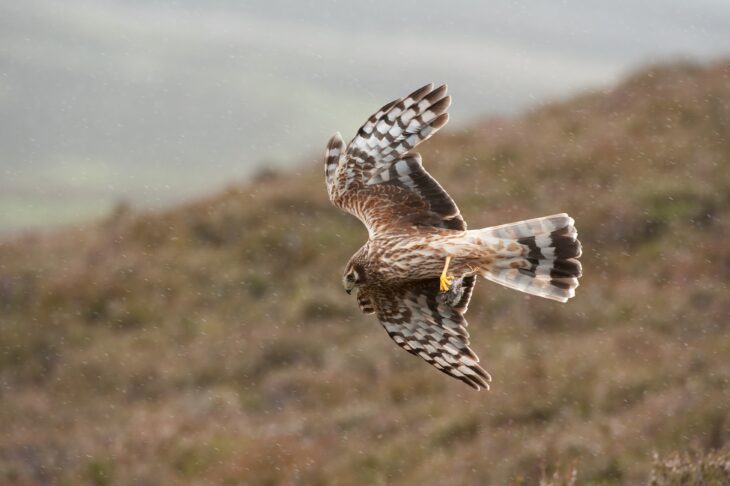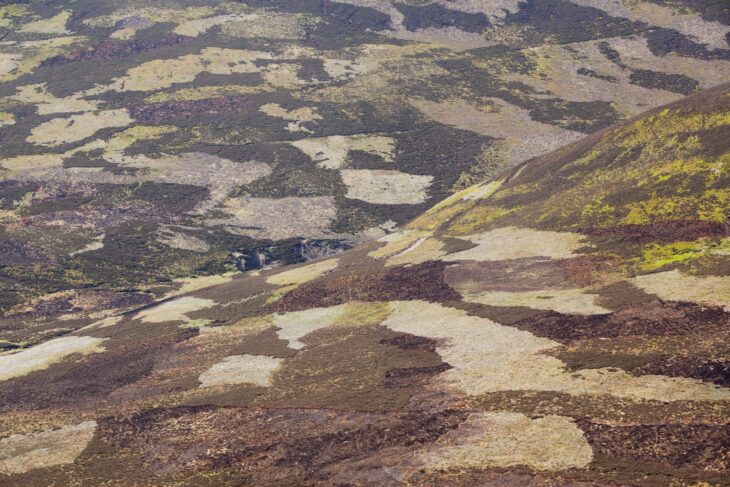Tougher restrictions mark a turning point for uplands in Scotland
As of 12 August, 2024, new licensing regulations under the Wildlife Management and Muirburn (Scotland) Act have come into effect, transforming the way landowners and managers must approach grouse shooting in Scotland. These changes have come following years of advocacy from many environmental charities such as ourselves.
Historically known as the “Glorious 12th” by those who participate in this grouse shooting, this date now also signifies the beginning of a new era of increased accountability. From this year forward, any estate wishing to conduct walked-up or driven grouse shoots must ensure that the owner or occupier of the land possesses the necessary licence. It is now illegal to shoot or take red grouse without this licence, marking a significant shift in the regulation of Scotland’s uplands.
A Positive Step Towards Sustainable Practices
The introduction of this licensing requirement is a welcome development for those who advocate for the sustainable use of Scotland’s vast moorland habitat. Grouse moors, which cover extensive areas of the Scottish uplands, have long been sites of contention due to practices associated with maintaining high grouse numbers for shooting. In some places, this has included the illegal persecution of birds of prey, such as hen harriers and golden eagles, which are often killed or disturbed with little consequence to those responsible. These species, protected by law, are essential components of our ecosystems, and their persecution is not only illegal but also morally indefensible.
The new licensing regime aims to curtail these illegal activities by giving NatureScot the power to suspend or revoke a grouse shooting licence where there is evidence of raptor persecution linked to an estate. However, it is crucial that NatureScot exercises strict scrutiny and avoids being overly lenient with estates where evidence suggests non-compliance. Ensuring that penalties are enforced consistently and fairly will be key to deterring illegal activities and maintaining the integrity of Scotland’s wildlife laws.

Addressing Predator Control and Animal Welfare
Another issue long associated with grouse moor management is predator control. To maintain high grouse numbers, certain generalist predators, such as foxes and crows, are often legally controlled under licence. While the idea of predator control may be unpalatable to some, it is a practice that has been justified in the absence of large apex predators to protect vulnerable ground-nesting birds and other species from predation. However, the methods of control used have raised serious animal welfare concerns, particularly the use of traps on grouse moors. Until now, the use of wildlife traps has been largely unregulated, leading to numerous instances of misuse and unnecessary animal suffering.
The new legislation aims to address these concerns by introducing licensing requirements for the use of wildlife traps, alongside a proposed ban on inhumane glue traps. These measures are intended to reduce the suffering of animals caught in traps and to ensure that predator control is carried out in a more humane and regulated manner.
The Need for Muirburn Licensing
Included in the Wildlife Management and Muirburn (Scotland) Act 2024 is a provision for licensing muirburn—the controlled burning of heather and other vegetation to manage the landscape. Progress on this aspect of the legislation has been slower and is working to a different timescale, with the new muirburn season between October and March. The code to guide land managers on muirburn still under development but it remains a critical issue. Muirburn, if not conducted carefully and under strict regulation, can have devastating effects on vital peatland soils and habitats, which are crucial carbon stores and biodiversity hotspots. The making of muirburn often occurs near the source of watercourses, being in upland areas and the impacts can cause soil degradation, increased flood risk downstream and reduced water quality. The urgency to finalise and implement this licensing framework cannot be overstated if we are to protect these essential ecosystems from further degradation.

Embracing Change for a Sustainable Future
The changes introduced by the new Act are a clear signal that the traditional model of ‘big bag’ driven grouse shooting, which has often relied on environmentally damaging and sometimes illegal practices, is no longer tenable. The Scottish Wildlife Trust believes that the sport shooting industry must now embrace this opportunity to evolve. By adopting more sustainable and ethical practices, the industry can continue to be a part of Scotland’s rural economy while also playing a role in addressing the climate and biodiversity crises that we all face. Ensuring a joined up and landscape scale vision of upland management helped by better scrutiny and control will have significant benefits for achieving wider biodiversity and climate goals.
As we move forward, it is our hope that landowners, estate managers, and all those involved in grouse shooting will see the value in these changes—not just for compliance’s sake, but as a chance to lead by example in the responsible stewardship of our natural environment. By doing so, we can ensure that Scotland’s landscapes are restored for future generations, not just as a backdrop for sport, but as vibrant ecosystems in their own right.
Help protect Scotland’s wildlife
Our work to save Scotland’s wildlife is made possible thanks to the generosity of our members and supporters.
Join today from just £3 a month to help protect the species you love.
Preface
As of 12 August, 2024, new licensing regulations under the Wildlife Management and Muirburn (Scotland) Act have come into effect, transforming the way landowners and managers must approach grouse shooting …
